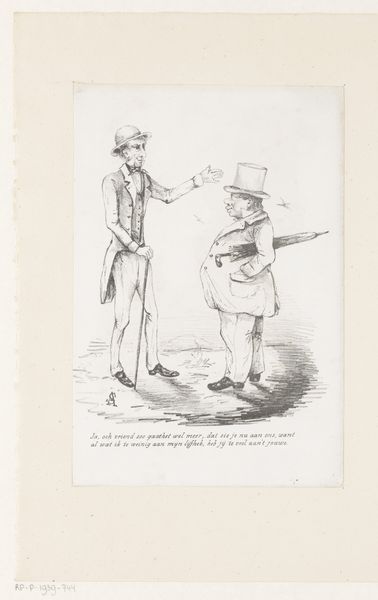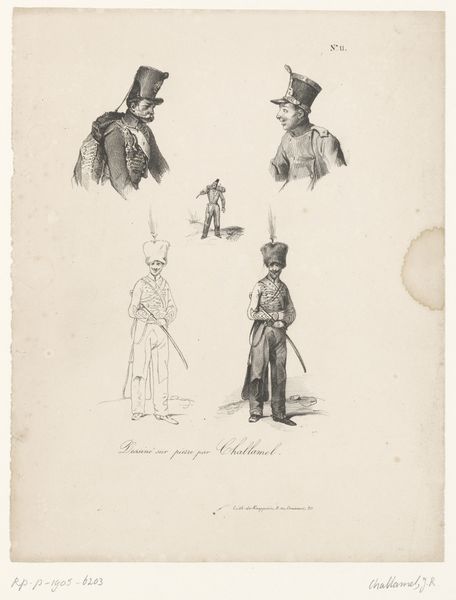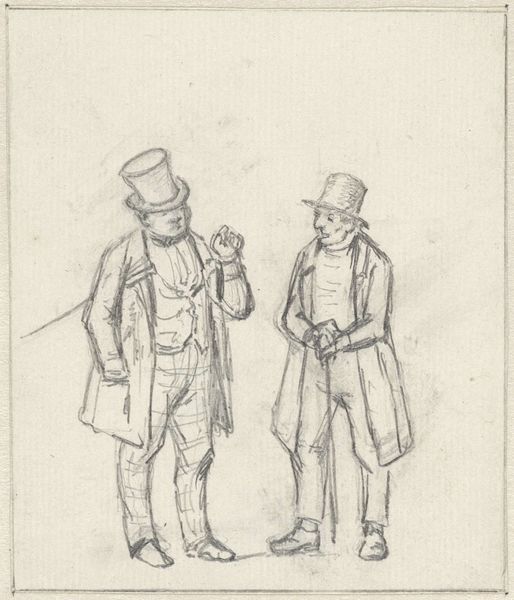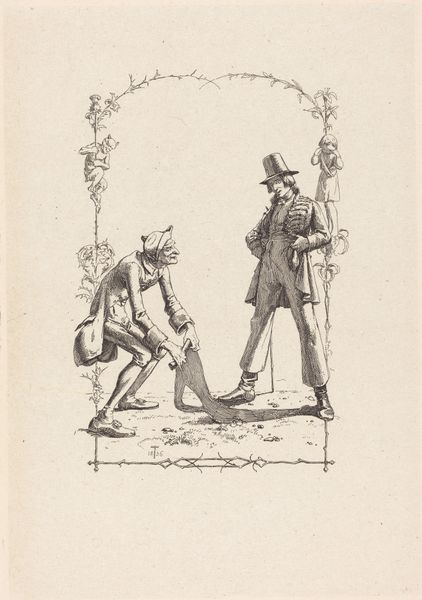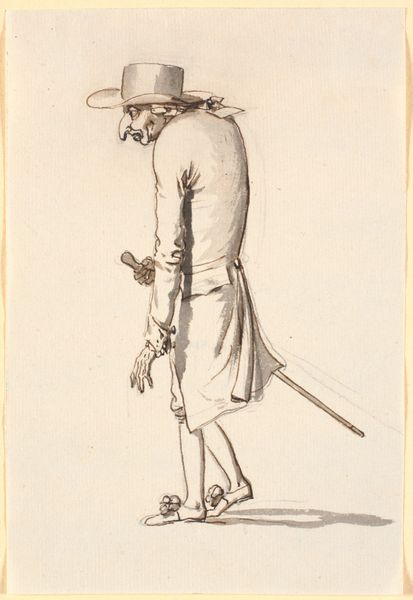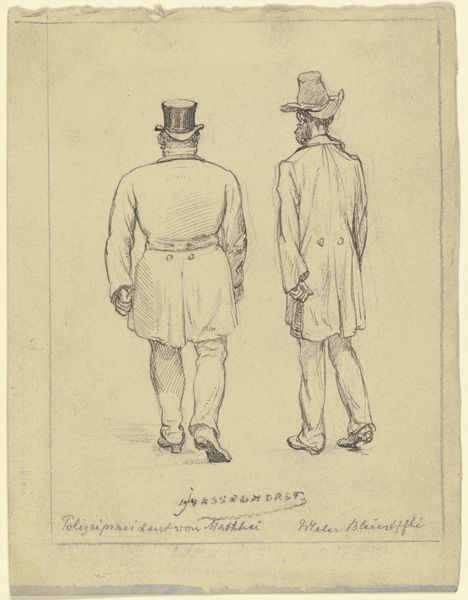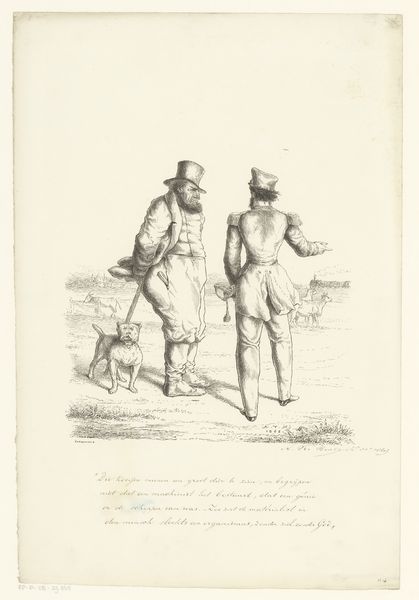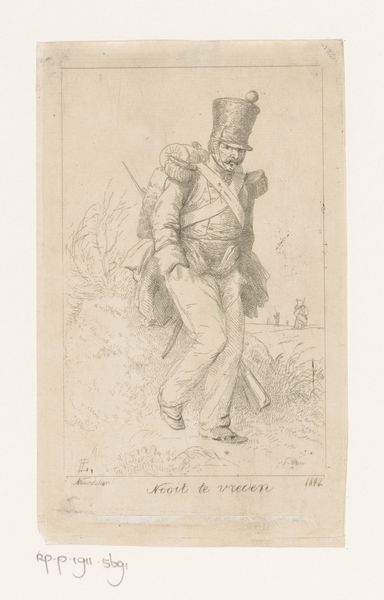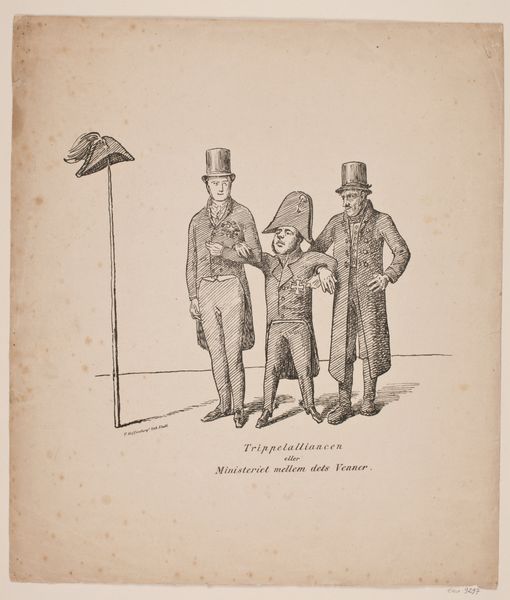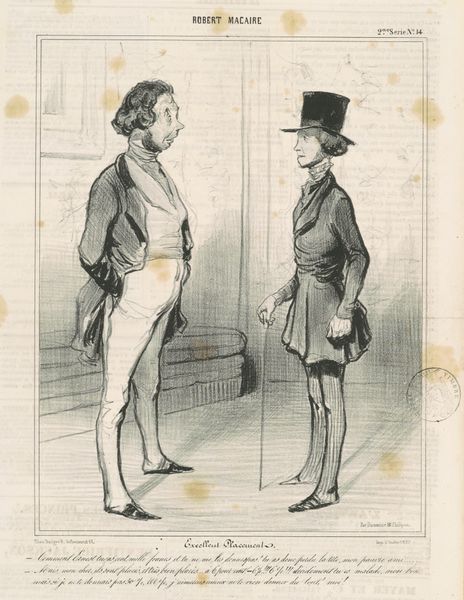
drawing, pencil
#
portrait
#
drawing
#
pencil
#
sketchbook drawing
#
genre-painting
Dimensions: 222 mm (height) x 168 mm (width) (bladmaal)
Curator: Today, we are looking at "Standing Farmer with Scythe and Farmer in Dress Uniform," a pencil drawing created around 1830 by Martinus Rørbye. What are your initial impressions? Editor: I’m immediately struck by the stark contrast between the two figures. The rough sketch-like quality gives it a rather somber and straightforward feel, almost anthropological in its focus on details. Curator: That’s insightful. This work reflects Rørbye's interest in depicting everyday life and traditional costumes during his travels. Notice how the attire signifies the men’s distinct roles. Editor: Indeed. The man with the scythe looks almost stoic, the heavy tool slung across his back creating this visual line of labor. Then there’s the other man, upright and quite refined in his decorative outfit; that light pencil rendering seems perfect to give it a refined touch. The tassels on his socks is a clever detail! Curator: The meticulous detail Rørbye employed in rendering the dress uniform offers a glimpse into the rising national romanticism of the era. Artists celebrated regional and rural identities. These drawings contributed to an idealized version of folk culture, even as it stood in contrast to increasing urbanization. Editor: It is remarkable how Rørbye balances precision and efficiency with just a few lines. Note how the faces are handled with sparse strokes, yet each has a discernible character. The clothing of both figures are handled in equal detail to each other, to show them as men of similar value regardless of their respective trades, this speaks volumes to this artwork. Curator: Precisely. It showcases how artistic documentation played a vital role in constructing cultural identity and historical memory. It suggests deeper considerations of class, labor, and representation in 19th-century Denmark. Editor: The artist's mastery is evident in conveying character and contrasting societal roles with this simple medium. Curator: Rørbye uses this genre-painting portrait to communicate how ordinary men can communicate importance within society. Editor: I find this art incredibly thoughtful because it is not merely about documentation.
Comments
No comments
Be the first to comment and join the conversation on the ultimate creative platform.
